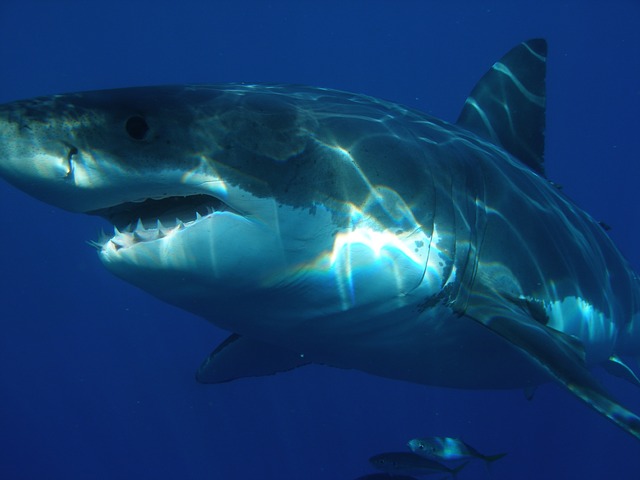Shark Facts
Below are some of the facts about sharks:
- Sharks are cartilaginous fishes. They do not have bones. Hence they are called elasmobranch. The cartilaginous skeleton of shark is lighten than bony skeleton. That is why it helps in buoyancy. The low density oil in their livers additionally helps to keep the body buoyant.
- Sharks can fossilize even though they have a cartilaginous skeleton. It happens because, as they mature their body generates calcium salts which gets deposited along their skeleton and this strengthens the cartilages. When the jaws of a dead shark dries, it looks strong, heavy and similar to a bone. Their enameled teeth also gets well preserved in the fossils.
- Sharks are very strong in vision. They can see very well in low light conditions and in darkness because of a tissue called tapetum, which is behind their eye balls and is a reflective mass. Sharks can also see colors.
- Sharks can feel electromagnetic waves and their differences, and can understand the temperature variations and changes in oceans. To measure this, they have a small black spots located near their mouth, nose and eyes. The spots are called ampullae of Lorenzini.
- The skin of sharks is rough and feels like sandpaper. That’s because of small teeth like structures which are all over the skin, and are called dermal denticles or placoid scales. The pointed side of the scales are directed towards the tail tip, so that the friction with water while swimming is minimum.
- When a shark is flipped over, it experiences tonic immobility due to which it goes into a state of trance. In this state it is less viable.
- The first occurrence of sharks in the oceans is estimated to be around 455 million years ago, which tells that they are quite old.
- The age of a shark can be estimated by counting their vertebral rings. The vertebra contains bands in concentric forms in pairs of opaque and translucent bands. The current researches however tells that this form of age estimation is not always accurate.
- Sharks normally have body colors close to grey, brown and olive. But the porbeagle and mako sharks have a blueish color. The blue shark has a true blue color which is brilliant blow on the upper part of the body throughout, and the lower body is snow white colored.
- The biggest fish to live in the ocean is the whale shark, and the second largest is the basking shark. The whale shark can grow up to 12.2 meters and weighs up to 40 tons. Basking sharks may have a length up to 32 feet and weight up to 5 tons. And the spot pattern of each whale shark is unique just like finger prints in humans.
